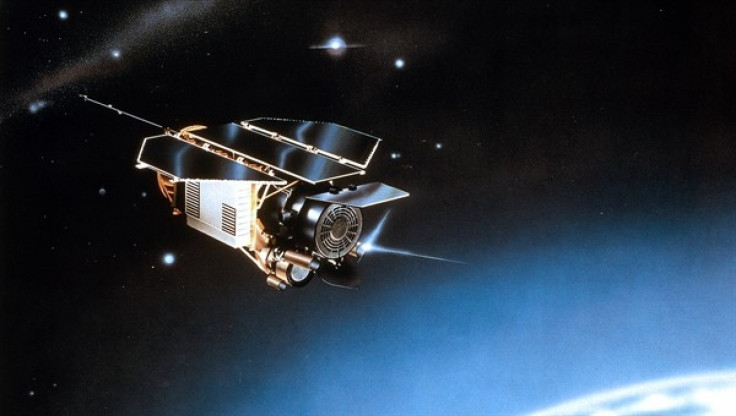Defunct German Satellite ROSAT Will Fall to Earth This Week: When, How and Where to See

Defunct German Roentgen Satellite, nicknamed ROSAT, is due to fall to Earth between Oct. 22 and 24, Space.com reported.
The debris may land in the areas under the ROSAT's orbit, which is 53 degrees north and south of the equator. That is a large strike zone that consists of just above Québec to the southern tip of South America.
The landing zones of falling satellites are hard to predict. No one really knows when the gigantic heap of space junk skipping across Earth's atmosphere will finally succumb to gravity. When NASA's UARS Satellite descended to Earth in late September, scientists were unable to pinpoint its final location, even after it fell.
It's expected that the bigger and heavier ceramic and glass components will survive the journey to Earth. Scientists say 1.7 tons of the 2.4-ton satellite will not burn up on reentry. However, the chance that someone, anyone, will be hit by the falling satellite are 1-in-2,000.
ROSAT is a German-made X-ray space observatory launched by NASA in 1990 and decommissioned in 1999.
Since ROSAT is orbiting 145 miles above the Earth at an incline of 53 degrees it can be viewed by nearly all inhabited regions on Earth. The satellite can be viewed with the naked eye, so you don't need a telescope to see it. However, the satellite can only be visible if it is in direct sunlight and the observer must be in near darkness. Thus you must catch it after dusk or before dawn.
Astronomers use a scale to measure the brightness of objects in the sky; the lower the number the brighter the object.
The brightest stars seen by Earth are Vega and Deneb with a magnitude of zero to one. The North Star rates at the 2nd magnitude, where medium brightness stars are at the 3rd magnitude and faint starts are rated fourth. ROSAT is between the 3rd and 4th magnitude of brightness, which is similar to Megrez, the star at the crux of the handle and bowl of the Big Dipper. ROSAT will appear to flicker as it tumbles through the atmosphere.
To find viewing schedules of ROSAT check out Heavens Above, and Spaceweather.com. The schedules are generated by computers days ahead of time, but as ROSAT's orbit decays it will be harder to predict. That means you will have to check the sites more frequently for updated info.
© Copyright IBTimes 2024. All rights reserved.











